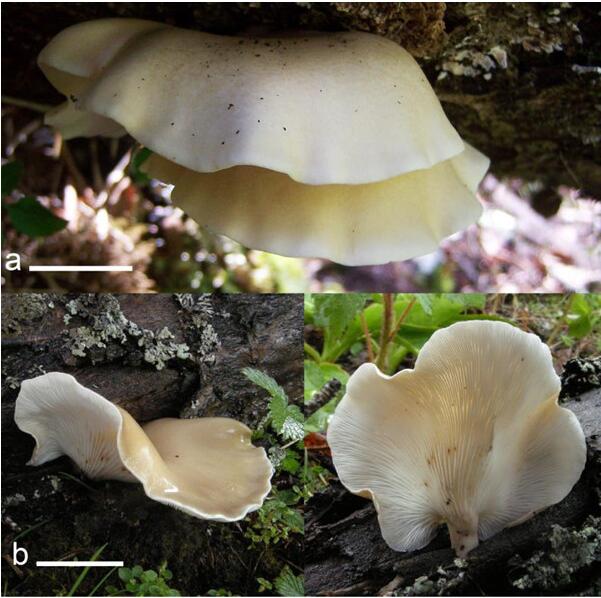
Most species in Pleurotus have great dietary and economic value. Species in P. ostreatus species complex are widely cultivated in East Asia. During the study of materials collected from Eastern Himalayas and the Hengduan Mountains, LIU Xiaobin and other team members from Prof. YANG Zhuliang’s research group from Kunming Institute of Botany of Chinese Academy of Sciences rediscovered P. placentodes (Berk.) Sacc in subalpine forests with 3000-4200 m altitude above sea level in Tibet and Yunnan.
Researchers found that Pleutotus placentodes was originally described from Sikkim in 1852 by British mycologist M. J. Berkeley as Agaricus placentodes. Then mycologists transferred this species in the genus Pleurotus or regarded it as a synonym of P. djamor. However, since the first publication of this species, no fruiting body of this species has been recorded in the past 164 years. Thus the only one specimen of this species is the holotype collected from Sikkim.
The taxonomy and phylogeny position of this species has been studied based on morphological, geographical and phylogenetic evidence.
Morphologically, P. placentodes differs from other similar species by its shorter and wider basidiospores with lower ratio of length/width. Geographically, this species distributed in subalpine mountains in the Himalayas over 3,000 m altitude above the sea level, while P. djamor is a pantropical taxon. Phylogenetically, P. placentodes and P. djamor are in two different major clades, and P. placentodes is basal to all other species of P. ostreatus species complex. Therefore, P. placentodes is an independent species.
This study has been published in Phytotaxa.
This study was supported by the National Basic Research Program of China (973 Program, No. 2014CB138305).

Pleurotus placentodes (Berk.) Sacc. (Image by KIB)

86-10-68597521 (day)
86-10-68597289 (night)

52 Sanlihe Rd., Xicheng District,
Beijing, China (100864)

